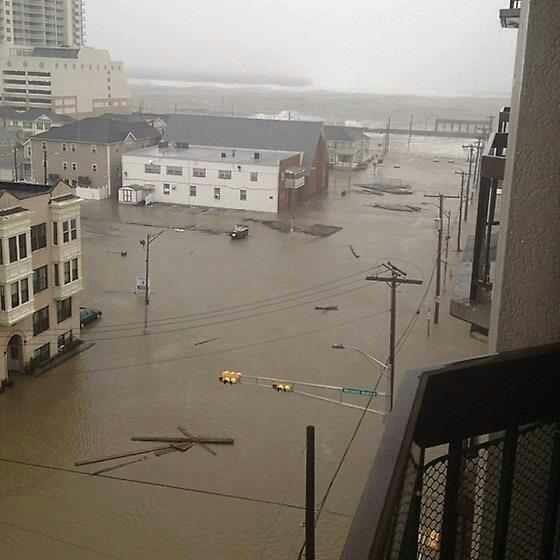Atlantic City is really going down this time

By Rebecca McCarthy
11 February 2019
(Longreads) – Atlantic City covers the northern third of Absecon Island, a barrier island made up of an alarming amount of sand. It is a bad town to die in — there are plenty of vacant lots but no cemeteries. In many places, if you dig down more than eight feet you hit water. A couple blocks away from the beach, the Absecon Lighthouse is built on a submerged wooden foundation for exactly that reason — so long as you keep wood wet and away from oxygen, it won’t rot. “We haven’t tipped yet,” said Buddy Grover, the 91-year-old lighthouse keeper, “but it does sway in the wind sometimes.” […]
Last June, NOAA released a report on high-tide flooding in the United States over the course of 2017. Atlantic City and Boston were tied for second place with 22 days of flooding from high tide alone. The only metro area more affected, with 23 days of flooding, was Sabine Pass, which sits on the Gulf Coast, where Texas meets Louisiana. “Sea level rise is very spatially dependent,” said Maya Buchanan. Buchanan is the resident expert on sea level rise at Climate Central, a research center based in Princeton, New Jersey. “So even New Jersey and New York are expected to have a different amount [of flooding] because there’s a lot of different factors. Some of them are global, some are regional, and some are very, very local.” New York is built on bedrock — metamorphic rock specifically, once incredibly hard and hot; that’s why so few dinosaur fossils have been found in the city. New Jersey’s soil is considerably more porous. “Atlantic City in particular,” said Buchanan, “but even New Jersey writ large, are expected to experience more sea level rise than the global mean.” […]
A little more than three years ago, as hope for a revival began to ebb, an architecture firm called Perkins+Will proposed a plan. Within the range of plans for Atlantic City, this one was unique — it was responsible. Atlantic City is four square miles, about the size of some college campuses. The shuttered casinos — windowless basements filled with slot machines — were perfect for a lab. The idea was to take the city’s vulnerability to the sea and turn it into an asset. Atlantic City would become a global hub for climate science, casinos gradually replaced with laboratories, the convention center reinvented as a training ground for civic leaders. “We weren’t talking about abandoning Atlantic City,” said David Green, one of the primary architects behind the project. “We were talking about repurposing it and bringing in academic and research partners to kind of rehabilitate the area as a kind of research hub.” Scientists would study ecological changes, sociological changes, and the way different kinds of buildings respond to sea level rise. One of the central parts of the plan was something Green called The Line, which would be a physical reminder of the changing coast and a way to make clear to the public what was happening. “You’re testing not just the physical community, but social community elements,” said Green. It was a good idea, but maybe a couple years ahead of its time. Climate change hadn’t settled into the national consciousness yet, and in the confusion of casino closings and the 2016 election Green’s plan failed to gain traction with local politicians and eventually died off. [more]